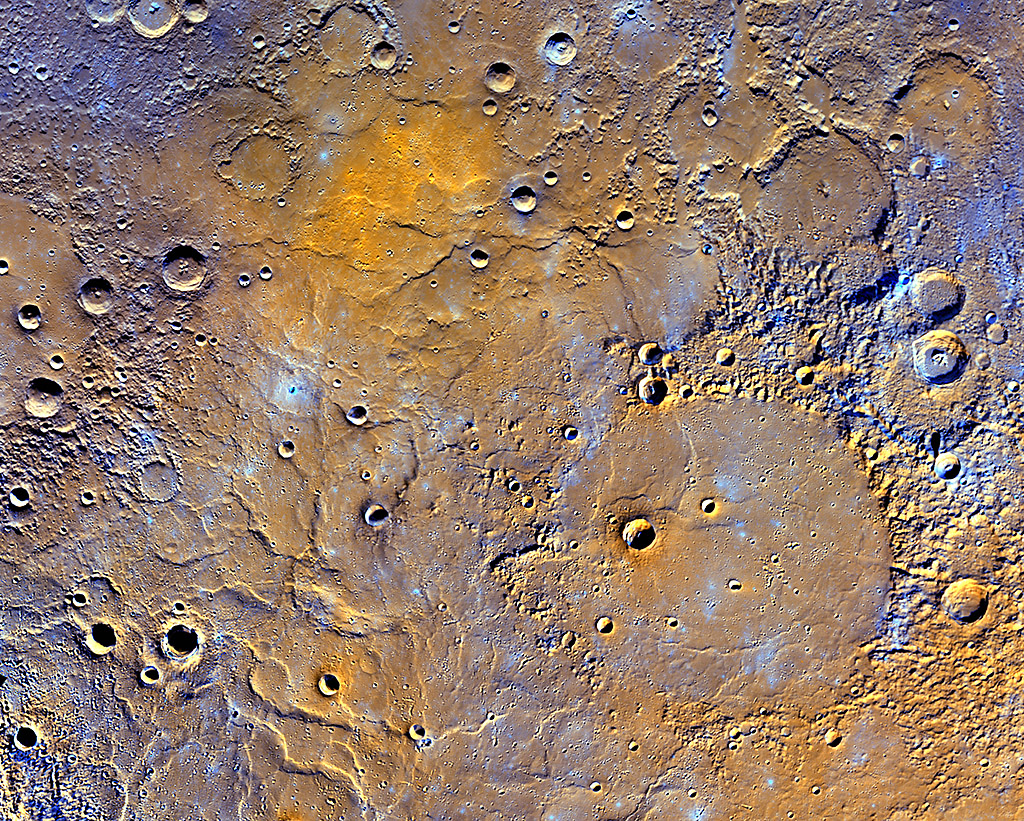A view of Mercury’s northern volcanic plains is shown in enhanced color to emphasize different types of rocks on Mercury’s surface. In the bottom right portion of the image, the 181-mile- (291-kilometer)-diameter Mendelssohn impact basin, named after the German composer, appears to have been once nearly filled with lava. Toward the bottom left portion of the image, large wrinkle ridges, formed during lava cooling, are visible. (NASA/JHUAPL/Carnegie Institution of Washington)
Home A view of Mercury’s northern volcanic plains is shown in enhanced color to emphasize different types of rocks on Mercury’s surface. In the bottom right portion of the image, the 181-mile- (291-kilometer)-diameter Mendelssohn impact basin, named after the German composer, appears to have been once nearly filled with lava. Toward the bottom left portion of the image, large wrinkle ridges, formed during lava cooling, are visible. (NASA/JHUAPL/Carnegie Institution of Washington) A view of Mercury’s northern volcanic plains is shown in enhanced color to emphasize different types of rocks on Mercury’s surface. In the bottom right portion of the image, the 181-mile- (291-kilometer)-diameter Mendelssohn impact basin, named after the German composer, appears to have been once nearly filled with lava. Toward the bottom left portion of the image, large wrinkle ridges, formed during lava cooling, are visible. (NASA/JHUAPL/Carnegie Institution of Washington)
A view of Mercury’s northern volcanic plains is shown in enhanced color to emphasize different types of rocks on Mercury’s surface. In the bottom right portion of the image, the 181-mile- (291-kilometer)-diameter Mendelssohn impact basin, named after the German composer, appears to have been once nearly filled with lava. Toward the bottom left portion of the image, large wrinkle ridges, formed during lava cooling, are visible. (NASA/JHUAPL/Carnegie Institution of Washington)


